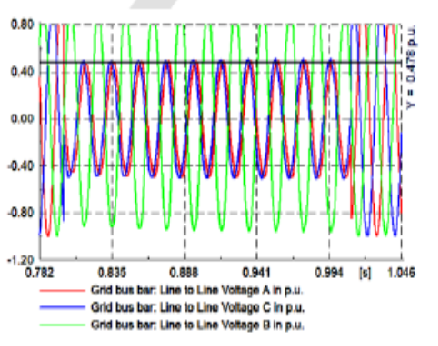


Indian Journal of Science and Technology
DOI: 10.17485/IJST/v16i10.2375
Year: 2023, Volume: 16, Issue: 10, Pages: 756-763
Original Article
Thangavelu Magesh1*, Isabella Annie1, Srinivasan Sambath2, Ganesan Devi3, Thangavelu Raja4
1Department of EEE, R.M.K Engineering College, Kavarapetta, 601206, Tamil Nadu, India
2Department of Mechanical Engineering, R.M.K Engineering College, Kavarapetta, 601206, Tamil Nadu, India
3Department of Physics, R.M.K College of Engineering and Technology, Puduvoyal, 601206, Tamil Nadu, India
4Engineering Department, College of Engineering and Technology, University of Technology and Applied Sciences, Shinas, Oman
*Corresponding Author
Email: [email protected]
Received Date:09 December 2022, Accepted Date:13 February 2023, Published Date:11 March 2023
Objectives: DFIG-based wind farms are predominant in their performance when compared to other types of generators. In the field study, due to transient events, converters at the machine side and grid side are affected. To protect the converters from an abnormal operation, overcurrent protective relays have to be designed and incorporated. Unsymmetrical fault analysis are help in the design of protective devise and speed sensors. Methods: DFIG-based wind systems are developed using the DIgSILENT power factory software and EMT simulations are executed during the unsymmetrical faults applied near the Machine Side Converter (MSC) and Grid Side Converter(GSC). Findings: During the simulation studies, various parameters are transient time, maximum current, steady-state, and voltage drop identified near the MSC and GSC. The short circuit parameters are attenuated during the unsymmetrical faults and the rotor maximum current increases by 2 to 3 times the rated current per unit, 40% to 50% voltage dip, and the current reach the steady state value after 1.213 sec during the fault. The parameters are affected more when a fault occurs near the GSC when compared to a fault near MSC. Novelty: These research findings will contribute to a better understanding and improvement of sensor sensitivity, as well as the development of control mechanisms, and protection tactics in designing more accurate and appropriate for DFIG-WT.
Keywords: DoublyFed Induction Generator; Machine Side Controller; Grid Side Controller; Unsymmetrical Fault; Sensor
© 2023 Magesh et al. This is an open-access article distributed under the terms of the Creative Commons Attribution License, which permits unrestricted use, distribution, and reproduction in any medium, provided the original author and source are credited. Published By Indian Society for Education and Environment (iSee)
Subscribe now for latest articles and news.